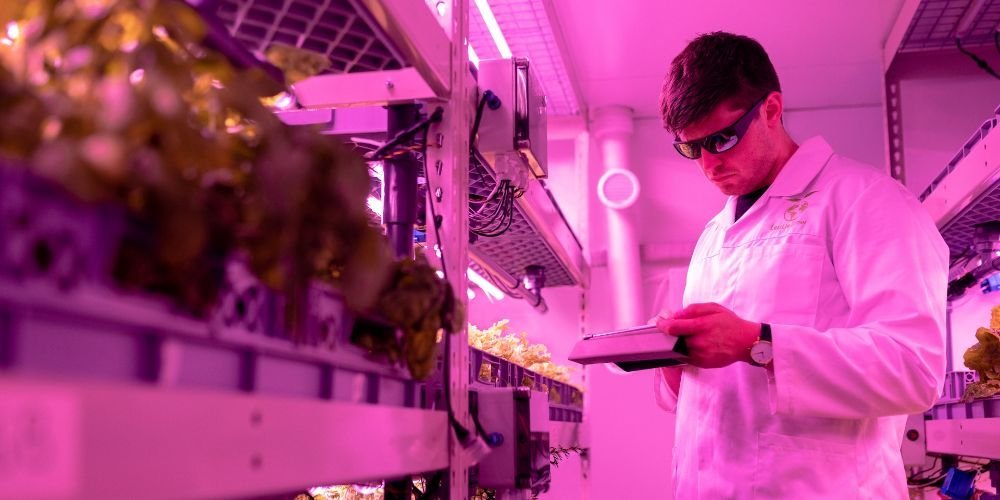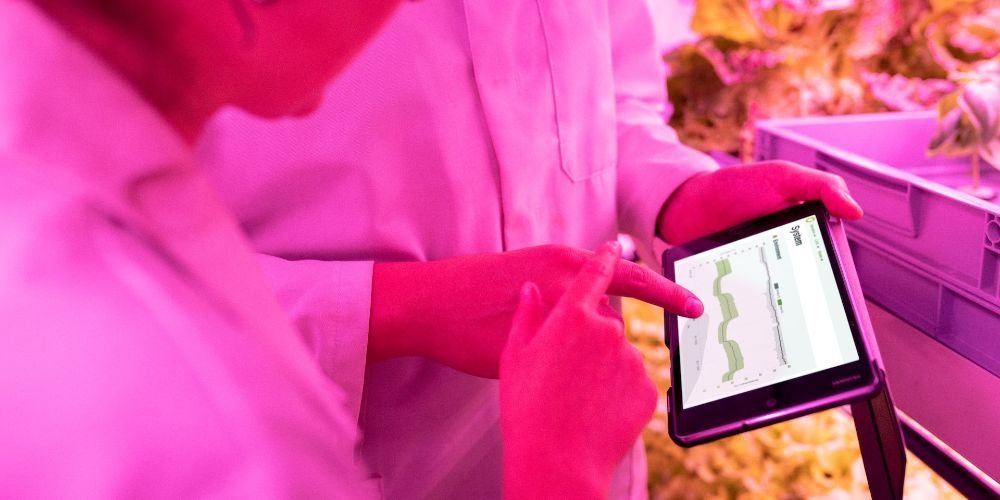Ag Tech: Merging Agriculture and Innovation

Amidst seemingly endless fields of corn, wheat, and rice that stretch out toward the horizon in places like the Sacramento Valley here in California or the “Cornhusker State” of Nebraska, a subtle revolution is unfolding. This revolution is none other than the seamless integration of agriculture and technology, often referred to as agricultural technology or ag tech. As the world grapples with the ever-growing demand for sustenance, ag tech is a beacon of hope, breathing new life into traditional farming practices.
Picture a world where farms are not just fields but interconnected ecosystems of precision and insight. Imagine the power of data guiding every cultivation decision, drones canvassing the skies to monitor crops, and artificial intelligence orchestrating a symphony of growth. This is the landscape where ag tech unfolds—a realm where agriculture, a cornerstone of human civilization, is reimagined by the tools that have revolutionized every facet of modern life.
From precision farming to AI-powered analytics, we will explore the remarkable potential of ag tech to meet today’s challenges and cultivate a more sustainable and prosperous future.
The Evolution of Agriculture: From Traditional to Tech-Driven
In tracing the origins of modern agriculture, one uncovers a rich and dark history of sweat, toil, and a necessary ingenuity. Traditional farming practices, deeply rooted in generational traditions, have fed communities and nations for centuries. Yet, as the world’s population burgeons and environmental challenges mount, the limitations of these time-honored methods become evident.
Traditional agriculture grapples with issues of resource scarcity, unpredictable weather patterns, and a mounting ecological toll of unsustainable practices. The need for solutions has never been more pressing. Ag tech emerges as the catalyst, bridging the chasm between time-honored practices and the new tools that will meet future demands.
It’s a harmonious merger of tradition and technology, where time-tested knowledge and cutting-edge converge to propel agriculture into a new era of productivity and efficiency.

Unveiling Ag Tech: Understanding the Landscape
Precision Farming: Revolutionizing Crop Management
At the core of ag tech’s transformative influence lies precision farming—a paradigm shift in how crops are nurtured and cultivated. Gone are the days of a one-size-fits-all approach; precision farming harnesses technology to tailor crop management to each plot’s unique needs. Tools like subsurface sensors provide real-time data on moisture levels, nutrient content, and even pest infestations. Farmers can now make informed decisions for optimal water usage, fertilization, and pest control.
Precision farming isn’t merely about optimizing yield but resource conservation. By pinpointing areas that require attention and directing resources precisely where they’re needed, waste is minimized, and agriculture’s environmental footprint is reduced. This approach doesn’t just increase efficiency—it nurtures a more sustainable coexistence with the land.
IoT and Agriculture: Creating Smart Farms
The Internet of Things (IoT) has evolved from office use to agriculture, ushering in an era of smart farms. IoT devices, ranging from soil sensors to weather stations, form an intricate web of data collection. This web gives farmers real-time insights into the conditions that affect their crops. With a smartphone in hand, a farmer can monitor humidity levels in a distant greenhouse, adjust irrigation systems remotely, and receive alerts about impending frost—all while optimizing resource usage and minimizing waste.
The beauty of IoT in agriculture is its potential to democratize knowledge. Through data-sharing platforms, small-scale farmers gain access to the insights that were once the domain of large agribusinesses. As smart farms proliferate, a more resilient and adaptable agricultural landscape emerges, where technology bridges the gap between expertise and accessibility.
Drones in Agriculture: Aerial Insights for Better Yield
Drones, once associated with remote warfare and cinematic shots, are now invaluable tools for farmers. Equipped with cameras and sensors, agricultural drones offer a bird’s-eye view of fields, granting farmers unparalleled insights into their crops’ health and needs.
A drone’s ability to swiftly survey vast expanses of land is a game-changer. Farmers can detect signs of stress, disease, or nutrient deficiencies with a precision that was once inconceivable. These insights lead to targeted interventions, reducing the need for broad-scale treatments and minimizing the use of harmful chemicals. Moreover, drones play a pivotal role in disaster management, assessing damage after natural events and enabling rapid response.
AI and Data Analytics: Cultivating Data-Driven Decisions
In the age of big data, agriculture is no exception to the transformative power of artificial intelligence (AI) and data analytics. The sheer volume of data generated by farming operations—ranging from weather patterns to soil composition—is a treasure trove of insights waiting to be unearthed. AI algorithms crunch this data to provide actionable predictions, offering farmers a crystal ball of sorts.
Imagine predicting disease outbreaks, optimizing planting schedules, and estimating yields with remarkable accuracy. AI-driven insights allow farmers to make decisions that are not only timely but also sustainable. They enable better resource allocation, reduced waste, and heightened efficiency, all while nurturing a delicate balance between human intervention and the rhythms of nature.
Sustainability and Environmental Impact
Amid the rapid advancements in ag tech, the theme of sustainability is center stage. Sustainable agriculture is a commitment to nurturing the land that sustains us. Ag tech shines a spotlight on this commitment by mitigating the environmental impact of farming practices.
From precision irrigation that conserves water to AI-powered pest management reducing the need for pesticides, ag tech’s sustainability initiatives are far-reaching. It integrates technology with traditional practices and aligns with the larger goal of feeding a growing population while safeguarding natural resources for future generations.
Challenges and Future Outlook
Yet, for all its promises, ag tech isn’t without its challenges. The initial investment required for technology adoption can be substantial, and the transition from traditional methods to data-driven approaches may be met with resistance. Moreover, concerns about data privacy and cybersecurity loom large in a world increasingly connected by technology.
Looking ahead, the future of ag tech is promising. Research and development continue to expand the possibilities, with innovations like vertical farming, genetic engineering, and blockchain for traceability poised to make their mark. As ag tech’s footprint grows, it holds the potential to transform agriculture, revolutionize global food systems, and address the pressing challenges of food security and sustainability.
Conclusion
As we close this chapter of exploration into ag tech’s revolutionary impact on agriculture, one truth stands clear: the marriage of technology and tradition isn’t just a merger; it’s an evolution. Ag tech unveils a landscape where innovation and agriculture are no longer distinct entities but interwoven threads shaping the future of food production.




